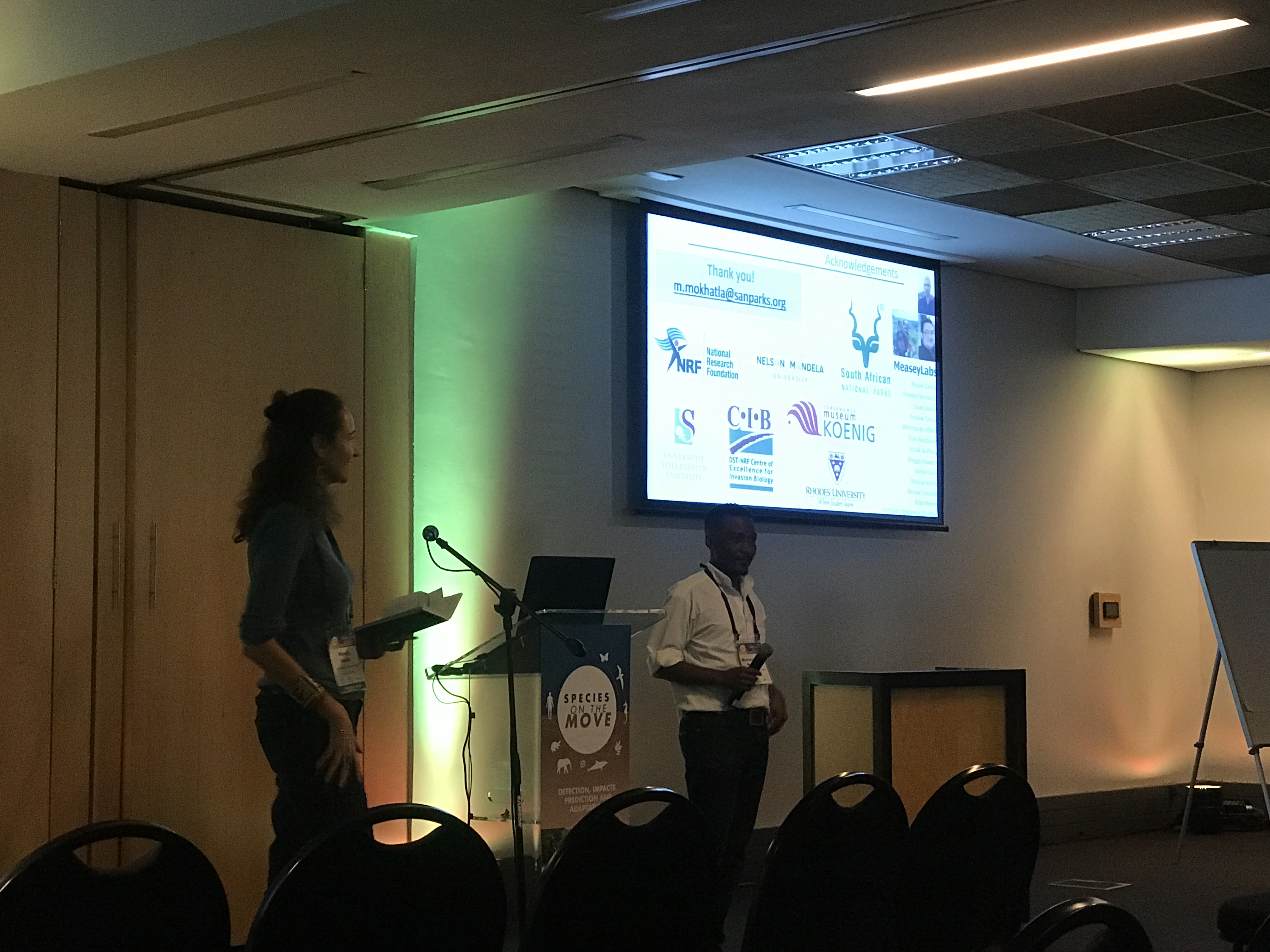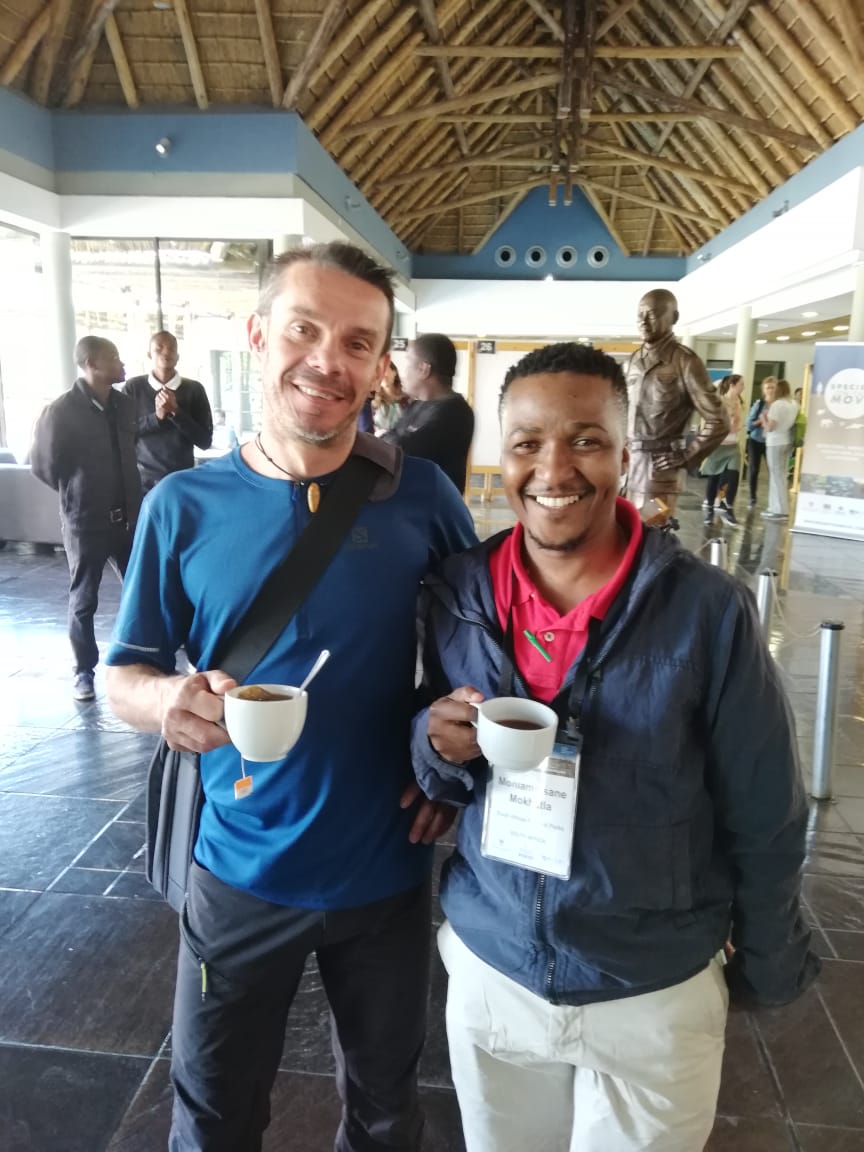Species on the Move in Kruger
Regular readers of this blog will know all about Mohlamatsane (aka Mac) and his work on modelling the distribution of three South African amphibians. You can read more about Mac's work in a blog post I wrote about his thesis defence (here). This week Mac presented his work to the "Species on the Move" held this year in Kruger National Park.

Mac's talk used his physiological and performance experiments on three South African anurans to fit a species distribution model and project this into future climate scenarios. He was really pleased to spend some time talking to Wilfred Thuiller who was also at the conference.

Congratulations Dr Mac! It's great to see with mixing with the stars.
Mokhatla, MM, Roddder, D & Measey, J Using physiology and performance to predict climate driven distribution range shifts in three temperate African anurans species: a hybrid modelling approach. Species on the Move 2019, Kruger National park
Changes in climate have had an overriding influence on species distribution throughout time and the manner in climate is currently changing is likely to be one of the leading threats to anuran diversity by the end of this century. Here we used physiology and performance data to build surface models that were later used as inputs into species distribution modelling using Maxent in a hybrid to predict the impacts of climate on the species range shifts of three African anurans with different ecologies: i) the principally aquatic African clawed frog (Xenopus laevis), ii) partially-aquatic common river frog (Amietia delalandii) and iii) semi-terrestrial raucous toad (Sclerophrys capensis), since the Last Glacial Maximum (LGM ≈ 21 000 YA), under current conditions and how they are expected to change by 2080. We find that ecophysiology modelling techniques accurately predicts the distribution of these widely distributed African anurans. Models suggest that anuran species lost thermally suitable space since the LGM, and that the rate of loss between the current conditions and 2080, far exceeds the rate of loss experienced between the LGM and current. Of interest is that the models suggest that A. delalandii will gain climatically suitable space by the year 2080, while S. capensis is expected to lose suitable climate space in the same period. These results suggest that species may respond to changes in climate individually which will largely be driven by how species adapt to climatic changes at the species-process levels, informed by differences in physiology and performance.
